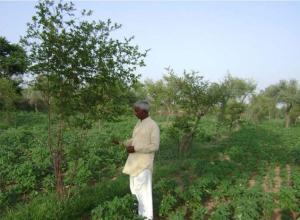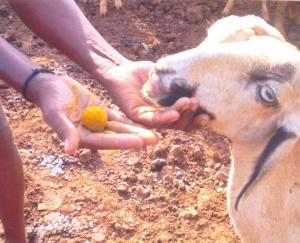
The basic design of the bullock cart (camel cart in some parts of North India) remains the same, with just some small variations in size, structure, and materials. A part of the cart load rests on the animals pulling the cart, leading to severe abrasions, and in some cases peel off of the skin. Another difficulty is negotiating sharp bends on narrow passages. Main use Mr. Mahesh Patel, Chief Innovation Manager, Gujarat Grassroots Innovations Augmentation Network (GIAN) says: “Farmers mainly use the cart to transport harvested produce, cow dung, manure and compost to the fields. The job of manually transferring the compost from the cart to the field is usually done by women under the scorching sun. Though there are several farmers in the region using the cart, it took one Mr. Amrutbhai Agrawat to think out of the hat, and reinvent a tilting cart model.” Hydraulic system The tilting cart with a hydraulic system for tilting the trolley behind makes the job easier both for the animals’ pulling it, and the people working in the field. According to this design, the cart is mounted on a metal frame and four wheels. A rotating device, a hydraulic jack, and an oil tank complete the design. The initial stages of experimenting with the new model ended in failure. The oil tank burst, because of the outlet being clogged, and the idea itself got temporarily shelved. “Many people in the village on seeing the unfinished cart gathering dust, started ridiculing my idea, labelling it unfeasible,” says Mr. Agrawat. A sudden flash in the mind one day while walking through the fields made the farmer think of using a horizontal gear as a lifting device. He decided to experiment and found it effective in lifting the cart but not in lowering it. Vertical gears Not losing heart, he decided to try out vertical gears. At first he mounted two gears and found them successful. He then increased the number of gears to eight, and found them working successfully and named the new cart Aaruni. According to the farmer, Aaruni saves about Rs. 90 for working on 0.16 hectares, and is three times more efficient compared to conventional models. “Existing models with two wheels pull a load of only 400kg, but after the introduction of four wheels the same cart can now pull a load of 500 kg,” explains Mr. Agrawat. Cost factor The farmer spent about Rs. 32,000 manufacturing the cart, but later scaled it down to Rs. 27,500. The average cart made from local wood costs Rs. 15,000 to Rs. 20,000. The cart was displayed at a farmers’ fair and about 400 farmers expressed a desire to purchase it. However, Mr. Agrawat doesn’t seem to be in a hurry to increase production. “I want farmers to fully get convinced, try it and then decide on purchasing it,” he says. Long felt need “Agrawat’s innovation is in response to a long-felt need among farmers. Inhereant advantage seems to be the forte of grassroots innovators since they live and work among their community and not in far away closed research labs. “They are fully aware of their problems, limitations and needs and their community better than anyone else,” says Mr. Mahesh. For more information readers can contact Mr. Amrutbhai Agrawat, Junagadh, Gujarat, mobile: 9925932307 and Mr. Mahesh Patel, Chief Innovation Manager, mahesh@gian.org and gian@gian.org, website:www.gian.org, phones : 079-26760398 and 26769686.



